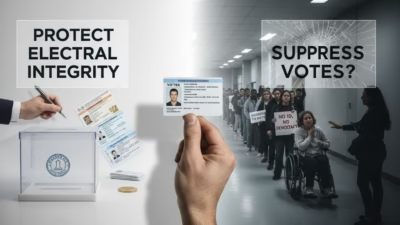Ever watched a group light up over a goofy question? That is the magic of funny debate topics. They are safe, simple prompts that turn any class, office, or party into a stage for wit and quick thinking. People laugh, listen, and learn to speak up without fear.
This guide breaks down how to pick great topics, set ground rules, and run fast rounds that keep energy high. You will get a big list by audience, plus plug-and-play formats. The topics avoid politics and heavy issues, so everyone feels welcome. Copy the prompts and use them right away.
Table of Contents
- How to Choose Funny Debate Topics That Are Safe, Inclusive, and Easy to Run
- Funny Debate Topics List by Audience and Setting
- Simple Debate Formats and Games for Quick Laughs
- Quick Ground Rules You Can Read Aloud
- Hosting Tips That Make You Look Like a Pro
- How to Build Better Skills With Silly Topics
- Troubleshooting Common Hiccups
- Sample Score Sheet You Can Copy
- Ready-To-Use Hosting Script
- Conclusion
How to Choose Funny Debate Topics That Are Safe, Inclusive, and Easy to Run
Keep things playful and light. Focus on ideas, not people. The best topics are about food, pets, gadgets, school life, or daily habits. Use short timers, praise both sides, and let people switch positions to reduce pressure. A little structure keeps the fun from slipping into awkward.
Set the tone before you start with a few quick rules and a format that fits your group size and time. Two to five minutes per round works for most ages. Plan a few “twists” to spark creative jokes that still make sense.
Keep It Kind, Not Cruel
Start with guardrails everyone can accept.
- No personal jabs, no politics, no religion, no body topics, no money status, and nothing tied to illness, grief, or trauma.
- Aim jokes at ideas, snacks, characters, or fictional matchups.
- Run a safety check: if even one person might feel targeted, skip it.
- Celebrate strong logic and clever humor from both sides.
Use this quick script: “We roast ideas, not people. Keep it school and work safe. Make it silly, not personal.” Simple and clear.
Match Topic to Age, Time, and Setting
Pick prompts that match your group.
- Classroom: school life, tech, food, and light what-if questions.
- Family: pets, chores, toys, cartoons, and breakfast-for-dinner.
- Work: meetings, snacks, coffee, chat vs email, simple tools.
- Parties and college: trends, texting, fries, midnight cereal, travel habits.
Timebox rounds so they stay upbeat:
- Kids: 2 to 3 minutes per round.
- Teens and adults: 3 to 5 minutes per round.
- Keep language simple for mixed groups or multilingual teams.
Add a Silly Twist to Boost Laughs
Constraints make humor pop, and they keep debates fair.
- Speak as a character, like a cat, superhero, or robot.
- Use only three reasons, no more.
- Include one wild but relevant fact.
- Ban the words yes and no for one round.
- Switch sides halfway through.
- Give judges bonus points for creative examples and funny evidence that still makes sense.
Small twist, big energy.
Topics to Avoid and Easy Reframes
Skip topics about politics, religion, body image, money, or anything personal or painful. If a topic feels risky, swap people for objects, food, or animals.
- Risky: Who would be the best student council president in this class?
- Safer reframe: Which snack would win a student election, a cookie or a carrot?
When in doubt, reframe to pets, snacks, school gear, or gadgets. Keep it silly, not spicy.
Funny Debate Topics List by Audience and Setting
Copy these prompts into your slide deck, doc, or chat. They are simple, concrete, and safe for most groups.
Classroom-Safe Funny Debate Topics for Grades 6 to 12
- Is cereal a soup?
- Should homework be optional on Fridays?
- Is a hot dog a sandwich?
- Should school start at 10 a.m. if everyone brings donuts?
- Would you rather have a rewind button or a pause button for life?
- Should gym class include esports?
- Are emojis better than punctuation for quick messages?
- Should lockers be mini fridges?
- Is pineapple on pizza a mistake or genius?
- Would you rather fight one horse-sized duck or 100 duck-sized horses?
- Should we replace tests with team games?
- Is it better to be invisible or to fly?
- Are group projects fair if the grade is shared?
- Should there be a school nap time?
- Is it smarter to learn one skill deeply or many skills a little?
Tips for classrooms: let students pick sides, then do a fast Switch. Award points for a claim, reason, and example.
Family and Kids-Friendly Funny Debate Topics (Ages 8+)
- Should dessert come before dinner?
- Should pets wear clothes on holidays?
- Is it better to be a superhero or a wizard?
- Would you rather talk to animals or speak every language?
- Is messy art more fun than tidy art?
- Should the family get a robot helper?
- Are board games better than video games for family night?
- Sprinkles or chocolate chips, which topping wins?
- Is breakfast food the best dinner?
- Would you rather live in a treehouse or a spaceship?
- Is the best pet a dog, a cat, or a fish?
- Should chores earn points you can trade for fun?
- Is it okay to wear socks with sandals?
- Are cartoons better than live action shows?
- Should weekends include a family nap hour?
Make it extra fun by letting kids judge one round. Hand them a timer and a sticker sheet.
Work and Team Icebreakers That Stay Professional
- Is coffee a productivity superpower or a crutch?
- Should all meetings be 15 minutes or less?
- Is chat better than email for quick questions?
- Should the office have a snack draft?
- Are virtual backgrounds a blessing or a curse?
- Should we ban reply-all forever?
- Is walking the best way to brainstorm?
- Does pineapple belong on office pizza day?
- Should every meeting start with a joke?
- Is the best team mascot a plant, a rubber duck, or a stress ball?
- Should we replace slide decks with show-and-tell?
- Are Mondays or Wednesdays tougher for deep work?
- Should AI write our status updates?
- Is a nap pod a smart investment?
- Is hybrid work better with cameras on or off for most calls?
Use emoji polls for judging in chat. Keep it light and agenda-friendly.
Party, Game Night, and College-Friendly Funny Debate Topics
- Is cereal better at night?
- Should burritos be eaten with a fork?
- Is texting better than calling?
- Pirate or ninja, who would crush a debate club tryout?
- Would you rather only whisper or only sing?
- Is it better to arrive early or fashionably late?
- Should ketchup go on almost everything?
- Is reality TV a sport?
- Curly fries or waffle fries, which is supreme?
- Is it okay to put ice in milk?
- Is rewatching the same show better than starting a new one?
- Plan or wing it, what wins on a road trip?
- Does ranch belong on pizza?
- Should socks always match or be a mix?
- Is naps-as-hobby a valid lifestyle?
If the group is big, run two stages at once with different prompts. Winners face off in a final.
Simple Debate Formats and Games for Quick Laughs
Short rounds keep the room buzzing. These formats are easy to run in a classroom, on Zoom, or at a party. Use a phone timer, a whiteboard for scores, and quick votes to pick winners. Encourage side-switching to build empathy and bigger laughs.
Two Corners With a Switch
Setup: mark two sides as Yes and No, or Team A and Team B. You can tape signs on walls or label breakout rooms.
- Round 1: 60 to 90 second openings per side.
- Round 2: 60 second rebuttals.
- Midway: call Switch, then everyone argues the other side for 60 seconds.
- Judge with a cheer-o-meter or a quick hand vote.
Why it works: people practice both sides, so no one gets stuck defending a weak hand. It also cuts nerves and invites more jokes.
Lightning Rounds and Speed Rebuttals
Great for large groups or short sessions. Keep it rapid.
- Use 30 second openings, 15 second rebuttals, and a 10 second closer.
- Run 3 topics back to back with new pairs each time.
- Award points for a clear claim, one reason, and one funny example.
The pace forces simple, strong points. People do not have time to overthink, so the humor comes out fast.
Tag-Team and Pass-the-Mic
Good for teams that need to collaborate and listen.
- Teams of 3.
- Speaker 1 gives the claim.
- Speaker 2 gives the reason.
- Speaker 3 gives the example.
- After the other side speaks, swap roles.
- Use a soft object as the mic to cue turns.
- Judge on teamwork, clarity, and a clean handoff.
This format rewards structure and shared spotlight. It also helps shy speakers take one small piece, not the whole speech.
Prop Debate and Mystery Box
Props add instant comedy and visual hooks.
- Place random items in a box, like a spoon, sock, or toy dinosaur.
- Draw one and argue it is the best invention, pet, or study tool.
- Use 60 second speeches with one visual gag allowed.
- Bonus point if the prop becomes part of the argument in a clever way.
Very good for younger groups and icebreakers. Keep the props simple and safe to handle.
Quick Ground Rules You Can Read Aloud
Set these once, then start the fun.
- We joke about ideas, not people.
- No politics, religion, body topics, money status, or sensitive life events.
- Keep it PG and school or work safe.
- Time is strict. Short rounds keep it fun.
- Switch sides if asked. Flex your brain.
- Praise smart points and good humor from both teams.
- Judge fast and cheer loud.
A strong host keeps the room friendly and focused. If a joke lands wrong, steer back with a smile.
Hosting Tips That Make You Look Like a Pro
Small moves make the session run smooth.
- Prep 10 to 15 prompts per group, plus extras.
- Start with a practice round so everyone feels ready.
- Rotate roles: speaker, timer, judge, and scribe.
- Use a visible timer and buzzer sound so turns end cleanly.
- Add bonus awards, like Best Analogy, Cleverest Reframe, or Most Polite Zinger.
- Keep a shared doc or slide where people can add their own safe topic ideas.
Want an easy opener? Ask, “Is cereal a soup?” Let volunteers model a short round, then split the room.
How to Build Better Skills With Silly Topics
Funny debates are not just laughs. They build real skills in a low-pressure way.
- Fast thinking: people learn to form a claim, reason, and example on the fly.
- Listening: switching sides forces you to hear and restate the other view.
- Clear speech: time limits train concise language and strong verbs.
- Empathy: arguing both sides makes people kinder in real talks.
- Creativity: props, twists, and characters reward fresh angles.
This practice transfers to class projects, team meetings, and daily chats. You get more confident without the stress of big issues.
Troubleshooting Common Hiccups
Even fun sessions need a plan B.
- If a topic stalls, cut the time in half, then switch to a new prompt.
- If volume rises, use a hand signal for quiet, then reset.
- If one person dominates, set a one-turn rule per round.
- If a joke feels off, reset with the group rules and move on fast.
- If the group is shy, run tag-team so no one speaks alone.
Staying calm and upbeat keeps the room with you.
Sample Score Sheet You Can Copy
Use three simple criteria. Give 0 to 2 points for each.
- Claim: Was the main point clear?
- Reason: Did they give at least one good reason?
- Example: Did they share one example or a creative bit of evidence?
A perfect round gets 6 points. Ties go to the loudest cheer or judge’s pick.
Ready-To-Use Hosting Script
- Welcome: “We are running short, silly debates. Keep it kind and PG.”
- Rules: “No personal topics, no politics or religion. Roast ideas, not people.”
- Timing: “You get 60 to 90 seconds per turn. I will call time.”
- Twist: “Halfway through, we may switch sides. Stay flexible.”
- Judge: “We will vote by hands or cheers. Smile if you lose, clap for both sides.”
- Start: “Topic one. Is cereal a soup? Team A says yes, Team B says no. Team A, go.”
Print it, stick it to your clipboard, and you are set.
Conclusion
Funny debates work because they mix light topics, short timers, and shared laughs. Pick safe prompts, set clear guardrails, and celebrate both sides. Copy the lists above, run one format today, then rotate roles next time to grow more voices. Make a shared doc to collect your group’s favorite new topics. The best debates make people laugh, listen, and want to play again.




